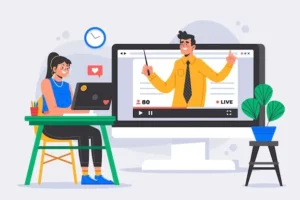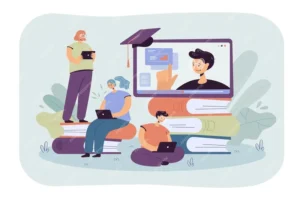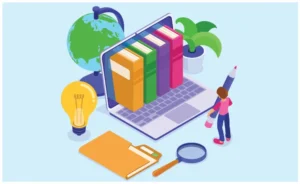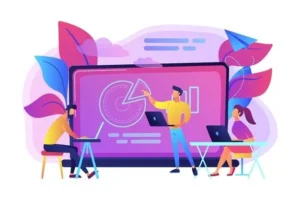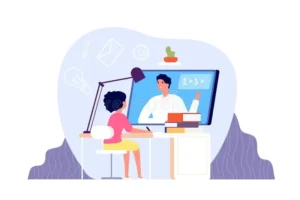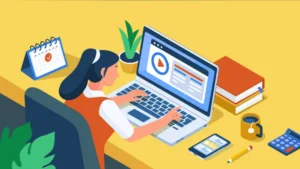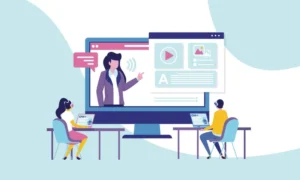Navigating Online Learning: Accessibility for Students with Disabilities
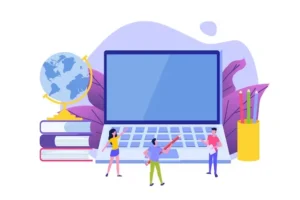
In the digital age, online education has emerged as a powerful tool for learners worldwide. However, accessibility remains a critical concern, ensuring that all students, including those with disabilities, can access and engage with online learning materials. In this article, we will explore how students with different types of disabilities access and engage with online learning materials and the assistive technologies that facilitate their learning experiences.
Contents
Visual Impairments
- Access: Students with visual impairments often rely on screen readers that convert text and graphical information into synthesized speech or Braille displays. These tools help them access written content, including textbooks and course materials.
- Engagement: Online learning platforms and educational websites designed with semantic HTML and proper alt text ensure that screen readers can convey meaningful information. Audio descriptions in multimedia content and accessible e-books enhance engagement.
Hearing Impairments
- Access: Deaf or hard-of-hearing students may use captions, sign language interpreters, or transcripts to access spoken content in videos and audio materials. Video captions can be toggled on and off, providing flexibility.
- Engagement: Engaging with discussions and forums is made possible through written text. Subtitles and transcripts make video lectures accessible, ensuring no information is lost.
Mobility Impairments
- Access: Students with mobility impairments might use specialized hardware and software to interact with digital devices. These can include adaptive keyboards, voice recognition software, or sip-and-puff devices.
- Engagement: For those with limited motor control, simplified navigation and keyboard-friendly interfaces are critical. Providing extra time for assignments and assessments can also support their engagement.
Cognitive Disabilities
- Access: Cognitive disabilities can vary widely, and some students may benefit from text-to-speech software, speech recognition tools, or screen readers to access written content.
- Engagement: Clear, concise language and a consistent course structure support students with cognitive disabilities. Visual aids, such as charts and graphics, should be accompanied by text explanations.
Learning Disabilities
- Access: Students with learning disabilities, such as dyslexia, might use text-to-speech or speech-to-text software to access written content and assist with note-taking.
- Engagement: Providing lecture transcripts and access to recorded lessons can help these students review and grasp the material more effectively. Clear organization and the option to customize text display can also improve engagement.
Neurodiverse Conditions
- Access: Students with autism or ADHD may find focus and organization challenging. They can benefit from tools that help them stay on track, such as time management apps or content organizers.
- Engagement: Online learning platforms that allow flexibility in pacing and offer visual organizers can help neurodiverse students engage with course materials.
Multiple Disabilities
- Access: Students with multiple disabilities might use a combination of assistive technologies to access content. Individualized solutions, such as customized keyboards and head-controlled pointers, are often employed.
- Engagement: Personalized learning plans and one-on-one support, when feasible, can ensure that students with complex needs are engaged with course materials.
Assistive Technologies and Learning Management Systems
Learning management systems (LMS) and educational platforms play a significant role in making online learning accessible. They should be designed to accommodate assistive technologies, including screen readers, voice recognition software, and keyboard navigation. Ensuring compatibility between the platform and assistive tools is paramount for students with disabilities.
Assistive technologies like JAWS (Job Access With Speech), Dragon NaturallySpeaking, or Kurzweil 3000 offer students the means to access and engage with course materials effectively. These tools help bridge the accessibility gap in the digital learning environment.
Conclusion
In the diverse landscape of online education, it is essential to recognize the various ways in which students with disabilities access and engage with course materials. As educational technology continues to evolve, it’s crucial that institutions prioritize accessibility by providing adaptable and accommodating online learning platforms. By understanding the needs of students with disabilities and utilizing the available assistive technologies, we can create a more inclusive and equitable online learning environment that benefits all learners, regardless of their abilities. Making online education accessible isn’t just a compliance issue; it’s a commitment to ensuring that every student has an equal opportunity to thrive in the digital classroom.

